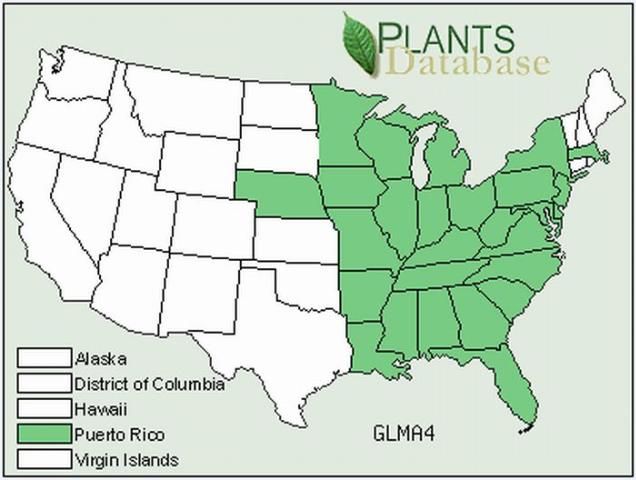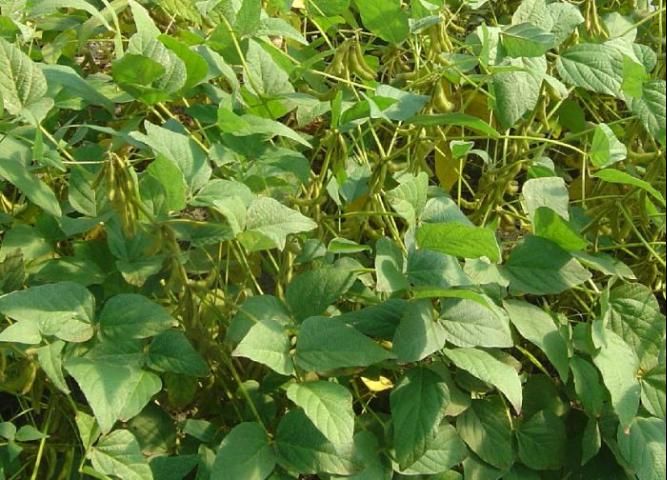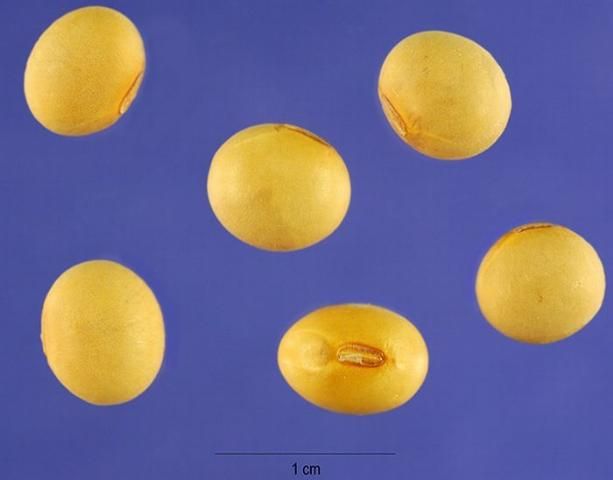Introduction
Soybean (Glycine max) is grown from Florida up to Canada, traditionally in rotation with corn and is grown on about 80–90 million acres each year in the United States. When ethanol spurred the price of corn over soybean, the acreage of corn increased at the expense of soybean acreage. However, corn prices have fallen and soybean acreage is expected to stay at the current level until prices change again. Higher profits from cotton and peanuts caused much of the acreage in the southeast to shift away from corn and soybeans in the 1990s. Recent interest in biofuels has piqued interest in soybean and corn production again and could result in an increase in acreage over the next several years in the Southeast and has already resulted in tremendous acreage increase in the mid-south. The United States is late entering the biofuels arena but has the capability and technology to be a major player. High yields are critical to successfully growing soybeans as well as other crops given the high costs of production and land rent. Soybeans can be profitable and fit into many different cropping systems.

Credit: http://plants.usda.gov/java/profile?symbol=GLMA4
Current Potential for Use as Biofuel
At current prices Florida and the southeast can grow more than a million acres of soybeans that can be double-cropped with small grains or grown after irrigated corn. Soybeans grown in Florida and the southeast could go into biodiesel (oil from soybean and other oil crops used in diesel engines) production and the soybean meal used for cattle feed. Production facilities can be put in place fairly quickly for this energy source. Several small facilities are already up and running in the Southeast with most being located in the mid-west.
Soybean has an oil content of 18–20% and therefore has less oil than other oil crops—palm oil (Malaysia); rapeseed and sunflower oil (Northern US, Canada, Europe); peanut oil (US); and jatropha oil (India)—that can also be used for biodiesel. However, the planting and management knowledge is already in place for soybean and it is one of the easiest crops to grow because it makes a good rotation crop with corn or cotton. The procedure for processing these crops into oil is fairly simple and can be done on-farm with small extruders. However, on-farm processing is seldom done as this requires specific infrastructure. Oil extracted from soybean can be washed with water and undergoes an esterification process which removes glycerin and allows the oil to perform like traditional diesel in commercial processing. Initially most of this biodiesel may be destined for use in farm equipment, but US automakers are now allowing as much as 20% to be used in diesel engines in passenger vehicles, which will create more demand for diesel as well as biodiesel. Many tractor manufacturers already have warranties on tractors that use blends up to 5–20% biodiesel. Biodiesel provides power similar to conventional diesel fuel, is cleaner burning and has a higher lubricating effect than petroleum diesel.

Credit: Plant Physiology, Agronomy Department, UF/IFAS
Biology of Soybean
Soybean is a warm season legume crop that grows throughout the humid region of the United States. It grows to a height of 2.5–5 feet. Soybeans of maturity group V-VII are normally determinate, reaching near maximum height before flowering begins. This bloom period extends for 4–5 weeks. Beans in the pods develop over a 5–8 week period depending on the maturity of the soybean variety. Soybeans grow well on a wide variety of soil types. However, they are sensitive to water stress during the pod fill period. This period normally runs from late August until late September for maturity group V soybean and through October for MG VI-VIII beans.

Credit: Steve Hurst, USDA-NRCS Plants Database
Production
The soybean biotechnology revolution began in 1995 and has been readily adopted by growers: glyphosate-resistant soybeans (Roundup Ready) allow growers more flexibility for timing herbicide applications and has taken over more than 90% of the soybean acreage nationally. Weeds have since become widely resistant to glyphosate making the technology less valuable with residual herbicides being an important addition to the weed control program to prevent further weed resistance.
Conservation tillage became more dependable and more economical for growers with the added benefits of timely planting, better stands, improved weed control and, often, better harvest conditions with glyphosate tolerant crops. Production challenges are usually related to difficulties implementing good rotations. Soybeans have often not been as profitable as peanut or cotton, so peanut has been used in rotation instead of soybean. With current market prices and the option of double-cropping another crop with good prices (wheat followed by soybean), soybean could once again be the rotation crop of choice for cotton or corn in the Southeast.
Maturity groups IV–VIII soybean can be used and are readily available for growers.
Soybeans are currently grown on about 30,000 acres in Florida with an increase in that amount expected to take place given current prices. Production information can be found in EDIS publication #AG185 Soybean Production in Florida (https://edis.ifas.ufl.edu/AG185).
Potential Yield
Soybean yields average about 42 bu/A across the United States. The Florida average yield is usually closer to 40 bu/A, but if good rotation and irrigation are followed, yields of 60–90 bu/A can be attained with irrigation and good rotations. Using an average yield for Florida, about 60–75 gallons of biodiesel could be produced per acre with the potential for double that with good yields and management. As varieties are selected for oil content, this number could be higher. At current prices, soybean meal would have to be sold for $200–300/ton or more to make production as viable as the normal chain of grain markets (soybean meal prices are currently in the $320/ton range).
Production Challenges
Soybeans became well established in Florida and the southeast from the 1970s through early 1990. Florida had almost 400,000 acres annually during the late 1970s. With the price of soybean well above this at the current time, a serious challenge has arisen in the past 10 years from a hurricane-introduced disease, Asian soybean rust, which can reduce crop yield by 50% or more.
Fortunately, this disease can be controlled with fungicides and has not presented a major challenge for most growers. Nematodes can be a challenge if good rotations are not followed. Good rotations can solve most of the pest problems with the exception of late worm infestations and stinkbug. However, most soybean growers are aware of these problems and control can be relatively easy and inexpensive.
Estimated Production Costs
Production costs for soybean for the edible oil trade are well known. Yearly updates of production costs can be found at (http://www.ces.uga.edu/agriculture/agecon/budgetsexcel.htm). These budgets often show that soybeans are more economical to grow than cotton, peanuts, or corn. If soybeans are to be grown in Florida and the southeast for biofuels, the price for the crop will have to rise or remain at or near current levels to encourage growers to continue growing soybeans in place of cotton or peanuts which occupy most of the row crop acreage in the south today.
Environmental Concerns
Soybean is generally considered a scavenger crop with few direct fertilization needs when double cropped with small grain or corn. It has a fairly low water requirement compared to corn, but does need adequate water during the pod fill period. It does best on soils with a clay layer in the top 8" in Florida or under irrigation with good rotations.
Summary
Soybean can produce good yield if good rotations are followed. It requires fewer inputs and less management than most other row crops. Biodiesel facilities could be set up quickly and production techniques are simple compared to other energy sources.
Sources of Additional Information
2015 Georgia Soybean Production Guide. The University of Georgia. http://gasoybeans.caes.uga.edu/documents/2015GeorgiaSoybeanProductionGuide-website.pdf
Biodiesel Performance, Costs, and Use. A. Radich. 2004 Energy Information Administration. http://www.eia.doe.gov/oiaf/analysispaper/biodiesel/index.html